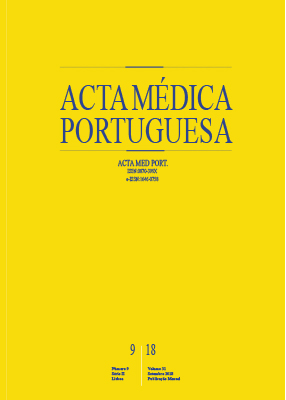Venous Thromboembolism in Pediatric Age: A 15 Year Retrospective Review
DOI:
https://doi.org/10.20344/amp.9639Keywords:
Child, Pulmonary Embolism, Venous ThrombosisAbstract
Introduction: Pulmonary thromboembolism and deep venous thrombosis occur in pediatric age, with unknown incidence, morbidity and mortality. Our aim is to review the epidemiology, clinical presentation, complementary diagnostic tests and prognosis of patients with pulmonary thromboembolism and deep venous thrombosis.
Material and Methods: Retrospective, descriptive and analytical study of pediatric patients admitted to a Level II hospital for pulmonary thromboembolism and deep venous thrombosis, between 2000 and 2014. Demographic characteristics, clinical history, comorbidities and risk factors were studied.
Results: Eleven patients (n = 7 pulmonary thromboembolism, n = 5 deep venous thrombosis, n = 1 both), 64% females and with 16 years old average, were admitted. All patients with pulmonary thromboembolism presented symptoms of chest pain and/or dyspnea, 25% syncope/palpitations and 25% fever. All patients with deep venous thrombosis reported localized pain at the site of obstruction, 83% edema/cyanosis of the affected limb and 17% fever. The study of positive thrombophilia was the most frequent risk factor in both entities. The mean value of D-dimers was 3252 ug/dL and 2660 ug/dL in pulmonary thromboembolism and deep venous thrombosis, respectively. All patients started anticoagulation, three required intensive care, two had sequelae and one died.
Discussion: All patients had at least one risk factor, and hereditary hypercoagulability was most commonly established.
Conclusions: The increased incidence in the pediatric population described in some studies can be attributed to an increased awareness of this pathology, medical advances and increasing survival of chronic diseases. There is a lack of evidence-based recommendations identifying patients at risk of thrombosis so that decisions can be made carefully, balancing the risk and benefit in each case.
Downloads
Downloads
Published
How to Cite
Issue
Section
License
All the articles published in the AMP are open access and comply with the requirements of funding agencies or academic institutions. The AMP is governed by the terms of the Creative Commons ‘Attribution – Non-Commercial Use - (CC-BY-NC)’ license, regarding the use by third parties.
It is the author’s responsibility to obtain approval for the reproduction of figures, tables, etc. from other publications.
Upon acceptance of an article for publication, the authors will be asked to complete the ICMJE “Copyright Liability and Copyright Sharing Statement “(http://www.actamedicaportuguesa.com/info/AMP-NormasPublicacao.pdf) and the “Declaration of Potential Conflicts of Interest” (http:// www.icmje.org/conflicts-of-interest). An e-mail will be sent to the corresponding author to acknowledge receipt of the manuscript.
After publication, the authors are authorised to make their articles available in repositories of their institutions of origin, as long as they always mention where they were published and according to the Creative Commons license.









